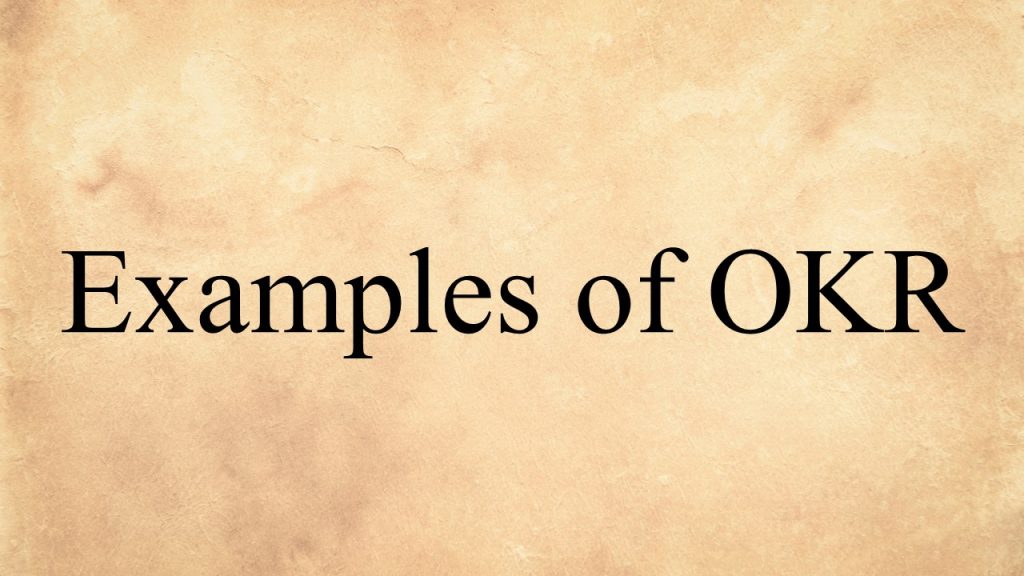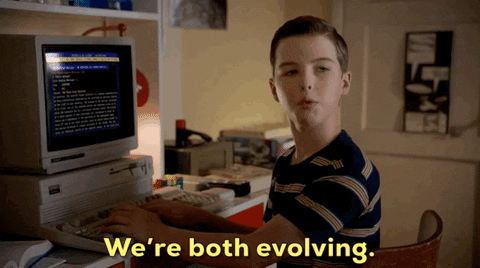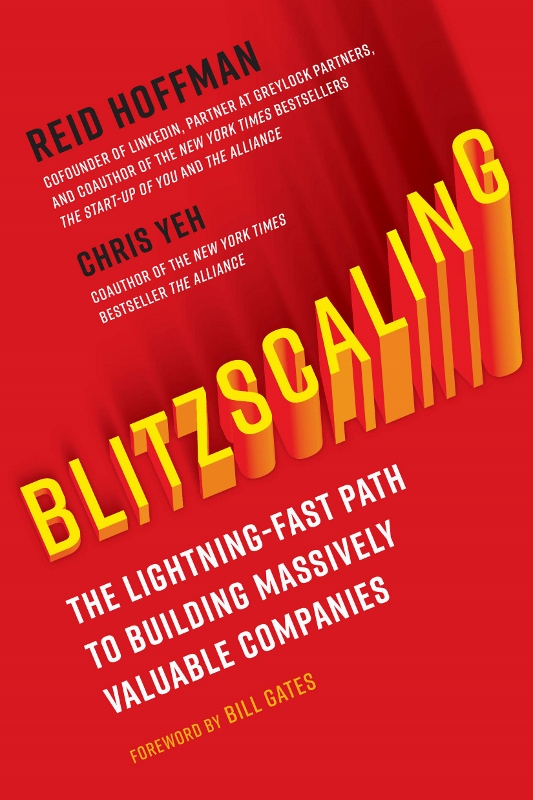
Here are some pro tips for writing effective OKR Objectives (part of OKRs – Objectives and Key Results):
- Make sure Objectives are SMART: Objectives should be Specific, Measurable, Achievable, Relevant, and Time-bound.
- Keep Objectives clear and concise: Avoid using overly complex language or including too much detail.
- Align Objectives with company goals: Objectives should align with and support the company’s overall goals and vision.
- Make Objectives challenging, but realistic: Objectives should push individuals and teams to achieve more, but they should also be attainable with effort and dedication.
- Encourage collaboration: Objectives should be written with input from team members and should encourage collaboration and teamwork.
- Consider adding Key Results: Including Key Results that support the Objective helps to ensure that the Objective is specific and measurable.
- Review and adjust Objectives regularly: Objectives should be reviewed regularly to ensure they remain relevant and aligned with the company’s goals and vision.
By following these tips, you can write effective Objectives that support sustainable business growth and drive progress towards your company’s goals.
#nilakantasrinivasan-j #canopus-business-management-group #B2B-client-centric-growth #OKR

Here are some examples of OKR (Objectives and Key Results) that an organization could set:
Increase sales revenue by 20% in the next quarter
- Objective: Increase sales revenue
- Key Results:
- Achieve a 15% increase in customer acquisition
- Increase average order value by 10%
- Launch 3 new products that contribute to revenue growth
Improve employee engagement and satisfaction:
- Objective: Improve employee engagement and satisfaction
- Key Results:
- Conduct employee satisfaction surveys and analyze results
- Implement a recognition and rewards program for employees
- Increase employee participation in training and development programs by 25%
Enhance customer experience:
- Objective: Enhance customer experience
- Key Results:
- Reduce customer complaint resolution time by 50%
- Increase customer satisfaction score from 80% to 85%
- Implement a customer feedback system and act on customer feedback to improve customer experience
These are just a few examples, and OKRs can be tailored to specific organizational goals and objectives. The key is to ensure that the objectives are specific, measurable, achievable, relevant, and time-bound (SMART).
#nilakantasrinivasan-j #canopus-business-management-group #B2B-client-centric-growth #OKR

Some of the common reasons for the OKR implementations failure include:
- Lack of buy-in: OKRs are only effective when they are embraced by the entire organization. If there is a lack of buy-in or understanding of the OKR framework, employees may not fully understand its purpose or may not see its value, leading to resistance.
- Overly complex goals: If the OKRs are overly complex or difficult to understand, employees may struggle to see how their work contributes to the achievement of the goals. This can lead to a lack of motivation and engagement.
- Unclear ownership: If the ownership of the OKRs is not clear, employees may not understand who is responsible for achieving the goals, or who they should turn to for support or guidance.
- Lack of resources: If the organization does not provide the necessary resources, such as time and budget, to achieve the OKRs, employees may feel frustrated and unable to deliver on the goals.
- Poor alignment: If the OKRs are not well aligned with the organization’s broader strategy, employees may struggle to see how their work contributes to the overall success of the organization.
- Infrequent reviews and adjustments: If the OKRs are not reviewed and adjusted regularly, they may become stale and no longer relevant, leading to a lack of motivation and engagement.
In order to avoid these issues, it is important for organizations to carefully design and implement their OKR framework, ensuring that it is well understood and embraced by the entire organization, and that the goals are well aligned with the organization’s broader strategy. Regular reviews and adjustments of the OKRs can also help to keep the framework relevant and effective over time.
#nilakantasrinivasan-j #canopus-business-management-group #B2B-client-centric-growth #OKR

The use of a balanced scorecard (BSC) and OKRs are not mutually exclusive, and both frameworks can provide valuable insights and benefits for organizations. The choice between using a BSC or OKRs, or using both frameworks together, will depend on the specific needs and goals of an organization.
The balanced scorecard is a performance management tool that provides a comprehensive view of an organization’s performance by measuring and tracking key performance indicators (KPIs) in four areas: financial, customer, internal processes, and learning and growth. The BSC provides a broad view of an organization’s performance and can help organizations make data-driven decisions and track progress towards their goals. strategy maps in balanced scorecards (BSCs) are indeed designed to drive performance and growth by providing alignment. Strategy maps used in BSC provide a visual representation of an organization’s strategy and help to align the organization’s efforts towards its goals. The strategy map links the organization’s vision and mission to its objectives, measures, and initiatives, providing a clear picture of how the organization will achieve its goals. By providing a visual representation of the organization’s strategy, the strategy map helps to ensure that everyone in the organization understands how their work contributes to the achievement of the organization’s goals and objectives. In this way, strategy maps play an important role in driving performance and growth by aligning the organization’s efforts towards its goals and ensuring that everyone is working towards the same objectives.
OKRs, on the other hand, are a goal-setting framework that provides a clear and specific structure for setting and tracking goals. OKRs help organizations align their efforts towards achieving specific and measurable objectives, and provide a clear understanding of what success looks like and how it will be achieved. OKRs can provide a more focused view of an organization’s performance and help organizations prioritize their efforts and resources.
In some cases, organizations may choose to use both the BSC and OKRs, leveraging the strengths of both frameworks to drive performance and growth. The BSC can provide a broad view of an organization’s performance, while OKRs can provide a more focused view and help organizations align their efforts towards specific and measurable objectives.
In summary, the choice between using a BSC or OKRs, or using both frameworks together, will depend on the specific needs and goals of an organization. Both frameworks can provide valuable insights and benefits, and organizations may choose to use both frameworks together to drive performance and growth
#nilakantasrinivasan-j #canopus-business-management-group #B2B-client-centric-growth #OKR

Customer experience (CX) and client centricity are related concepts, but they are not the same thing.
Customer experience (CX) refers to the overall perception that a customer has of a company, based on their interactions with it. It includes all touchpoints, such as the website, customer service, and in-store experience, and it covers the entire customer journey, from awareness to post-purchase. CX is a holistic approach to understand, design and measure the customer journey, and make improvements that increase customer satisfaction and loyalty.
Client centricity, on the other hand, is a business strategy that prioritizes the needs and preferences of the customer. It is a way of thinking and acting that puts the client’s needs at the center of all business decisions. It is about understanding the customer’s needs and tailoring products, services, and interactions to meet those needs. It is a way of creating value for the customer, and it is a long-term approach to build trust and loyalty.
In summary, CX is focused on measuring and improving the customer’s overall perception of the company, while client centricity is focused on understanding and addressing the specific needs of individual customers. Both concepts are important, but they have different focuses and goals. A company that wants to provide a great customer experience should also have a client centric mindset.
Free Download
Download your copy of a research report on B2B customer experience practices in India.
Our research is to understand the best practices amongst the enterprises across various sectors in Indian region when it comes to Customer Experience Transformation. Customer Experience as a concept is generally not given the required attention is B2B sector. With increase in the competition in the market, customer experience is one of the major thing which defines the performance of the organization.

Example 1
A company that sells high-end kitchen appliances. This company has a customer experience strategy in place that focuses on creating a seamless and enjoyable shopping experience for customers. They have a user-friendly website, a knowledgeable customer service team, and a well-designed showroom. Customers are greeted warmly upon entering the store, and the sales associates are trained to ask the right questions and guide customers through the purchasing process. Overall, the customer experience at this company is positive and customers feel well-informed and satisfied with their purchase.
The same company also has a client centric approach. They conduct market research and segment their customer base, understanding the different needs and preferences of their target market. This allows them to tailor their products, services, and interactions to the specific needs of different customer segments. For example, they offer a wide range of products for professional chefs, as well as for home cooks, and they have different sales associates to help customers from different segments. They also conduct surveys and collect feedback from customers, to understand their specific needs and preferences and make adjustments to their products and services accordingly.
In this example, the company’s customer experience strategy focuses on creating a positive overall perception of the company, while their client centric approach focuses on understanding and addressing the specific needs of individual customers. Both strategies work together to create a positive shopping experience and increase customer satisfaction and loyalty.
Example 2
A company that sells enterprise software to help with supply chain management. They’ve got a customer experience strategy that makes sure buying from them is a breeze. They’ve got a website that’s easy to navigate, a sales team that’s quick to respond, and an onboarding process that’s as smooth as butter. As a result, their clients are happy with their purchase experience.
But this company doesn’t just stop there, they also have a client-centric approach. They take the time to understand their clients and their specific needs. They research their clients, segment them and tailor their software, services and interactions to specific client segments. For example, they might have different software packages for different industries, and different sales teams to help different client segments. They also ask for feedback and use it to improve their software and services.
In this example, this company’s customer experience strategy is all about making sure their clients have a good overall experience with the company, while their client-centric approach is all about understanding and addressing the specific needs of individual clients. Both strategies work together to create a positive purchasing experience and keep their clients happy.
#nilakantasrinivasan-j #canopus-business-management-group #B2B-client-centric-growth #customer-experience #client-centricity

Client centric strategies play a crucial role in a go-to-market (GTM) strategy, as they help to ensure that the products or services being offered meet the needs and preferences of the target customers. A client-centric approach to GTM focuses on understanding and addressing the unique needs of different segments of customers, rather than treating all customers the same.
Here are a few ways in which a client-centric strategy can be incorporated into a GTM plan:
- Segmentation: Segmenting your target market based on characteristics such as demographics, behavior, and needs can help you to tailor your products and services to specific customer segments. This can result in more effective and efficient marketing efforts.
- Personalization: Personalizing your marketing and sales efforts based on the unique needs and preferences of individual customers can help to build stronger relationships and increase customer loyalty.
- Feedback: Incorporating feedback from customers into your GTM strategy can help you to identify areas for improvement and adapt your approach as needed.
- Empathy: Putting yourself in the customer’s shoes and trying to understand their needs, pain points and preferences can help you to create products and services that better meet their needs.
- Continuous improvement: Continuously monitoring and analyzing customer feedback and market trends to make adjustments to your GTM strategy as needed.
By taking a client-centric approach to GTM, companies can improve their chances of success by creating products and services that are more closely aligned with the needs and preferences of their target customers. This can lead to increased customer loyalty, higher sales, and better overall business performance.
Free Download
Download free XL based touchpoint assessment check sheet for evaluation & benchmarking with instructions
This is an XL based check sheet with two different scenarios – (1) To assess various touchpoints across customer journey and (2) To benchmark touchpoints against competition for similar journey steps.

#nilakantasrinivasan-j #canopus-business-management-group #B2B-client-centric-growth #client-centric-strategy

A Go-To-Market strategy is a plan for how you will bring your products or services to market and reach your target customers. It includes elements such as product positioning, target market, distribution channels, sales and marketing tactics, and key performance indicators.
A good GTM can directly improve the chances of the overall company’s business growth rate.
Here are some steps you can take to create a GTM strategy for your company:
- Understand your target market: It’s essential to have a clear understanding of your target customers, including their needs, pain points, and buying habits. This information can help you to identify the most effective ways to reach and engage with them.
- Define your product positioning: This is how you want your product or service to be perceived by your target customers. It should be based on your understanding of your target market and should take into account your competitive landscape.
- Identify distribution channels: Determine which channels will be most effective for reaching your target customers. This could include online and offline channels, such as e-commerce, retail stores, and direct sales.
- Develop a sales and marketing plan: Once you have a clear understanding of your target market, product positioning, and distribution channels, you can develop a sales and marketing plan that includes tactics such as advertising, public relations, content marketing, and events.
- Set key performance indicators (KPIs): These are metrics that you can use to measure the success of your GTM strategy. Examples of KPIs could include website traffic, number of leads generated, sales, and customer retention.
- Continuously Monitor and Optimize: Once your GTM strategy is in place, it’s important to continuously monitor and optimize it based on the data and feedback you receive. This will help you to adapt to changes in your market and customer needs and fine-tune your approach.
It’s worth noting that creating a GTM strategy is an iterative process. You may need to adjust and refine your strategy as you learn more about your target market and customers, or as the market changes. And also, these steps are general guidelines and the actual steps you need to take might be different based on the specific situation of your company.
#nilakantasrinivasan-j #canopus-business-management-group #B2B-client-centric-growth #Business-growth

Improving EBITDA can be a tricky business for B2B companies. There are a lot of factors that come into play, and it’s not always clear what the root of the problem is.
For example, if sales aren’t where they should be, it could be because the company isn’t reaching the right market or because their sales team isn’t as effective as it could be. On the other hand, if the product or service isn’t selling well, it could be that it’s not meeting customer needs or it’s not priced competitively.
Marketing is another area where things can get tricky. A lack of effective marketing can lead to low brand awareness and a lack of leads, which can impact sales. And if the company is not differentiating its products and services from competitors, then it will be hard for them to stand out in the market.
Operations can also play a big role in EBITDA. A lot of B2B companies struggle with high overhead costs and inefficiencies in their processes. This can include things like lack of automation, lack of process standardization, and a lack of focus on cost-cutting.
And let’s not forget about finances and funding. A lot of B2B companies struggle with understanding their finances and managing their finances effectively. And if a company doesn’t have access to adequate funding, it can be hard for them to invest in areas that could improve their EBITDA.
All of these factors can make it difficult for B2B companies to improve EBITDA, but by identifying the root cause of the problem and taking a strategic approach, they can make the improvements they need to see better EBITDA and overall growth
#nilakantasrinivasan-j #canopus-business-management-group #B2B-client-centric-growth
Blitzscaling is a book by the co-founders of LinkedIn, Reid Hoffman and Chris Yeh, an investor and an author, respectively. The book explores “blitzscaling,” a way to grow your startup quickly by taking big risks. Most of the concepts of Blitzscaling describe classical start-up setups in B2C or D2C. I’ve made an attempt to apply the principles to B2B.
One of the key techniques covered in the book on Business Model Innovation is about four growth factors and two growth limiters. They are new business models that challenge the status quo with unconventional ideas.
So the quest now is to understand how to drive growth in a B2B setup by using the principles of business model innovation as described in the Blitzscaling method.
Four Growth Factors
- Market Size
- Distribution
- High gross margins
- Network Effects
Two Growth Limiters
- Lack of Market Fit/Product/Service Offering
- Operational Scalability
Market Size
The segment and the type of client the organization wishes to target have to be narrowed down. But a common mistake noticeable in most companies now-a-days is that they cast their “small” net too narrowly.
For example, a B2B software services firm narrows its focus on ERP for the leather industry. While it sounds like a good definition of a target segment and the company may certainly find initial success, in the long run they are likely to run out of prospects. For example, Apple started off targeting the PC market, but today that is only 10% of their revenue. If they had remained focused on the “PC market,” we wouldn’t have iPhones today.
So the question to ask when you want high growth is:
Question yourself : How large is the market you’re targeting? Is it really reachable? What are TAM, SAM, and SOM?
Distribution
Even with a great product or service offering, without sufficient distribution, do you think the organization will be successful?
Essentially, distribution is the means through which you have access to your target market. Maruti Suzuki, the automotive market leader in India, is unbeatable merely because of its vastly spread distribution network. For B2B companies, this is about their access to the market.
Blitzscaling talks about two distinct ways to maximize distribution: leveraging existing networks and virality.
Can we leverage existing platforms to gain the exposure and traction necessary to reach many clients? Take the example of Paypal, whose growth blitzscaled when it provided easy payments on eBay. So consider if you should bank on an existing installed client base to build your product or service. For example, creating a product or service such as a plug-in or an add-on for customers on the SAP ecosystem or Microsoft. So simply look for a market leader with more than 50% market share and build something for their customers.
Next, consider virality, the process of one customer bringing in additional customers. A very simplified version will be referrals. But for someone to refer to your service or product, you need to consider what their incentive is. Yes, the superlative quality of your product or service is a prerequisite, but also consider the non-monetary value to your patrons.
High Gross Margins
This is common sense in business. But, when you consider this at the time of designing your product or service, you can build businesses with high margins. It’s quite okay if your current business model operates on a high volume, low margin business. Take the example of Amazon. Its profitability does not lie in its low-margin retailing but rather in its high-margin Amazon Web Services (AWS) cloud service.
Question yourself : Is your business generating gross margins as you expected? Are there assumptions that went wrong? Are there ways to drastically course correct?
Network Effects
Network effects are something very similar to Amazon’s flywheel concept, covered in my previous issue. This is typically a B2C concept. The network effect is essentially how an increased user base enhances the value for the users. For example, as more people use Instagram, existing users will find more value from the platform. The same applies to WhatsApp, mobile networks, etc.
While market size, distribution, and high gross margins are design factors to carve out a high-growth business model, network effects are all about sustaining and rapidly scaling that growth to the next level.
B2B companies usually isolate clients and treat each of them separately. Consider the benefits of your clients interacting with each other, sharing their business challenges, and learning from each other. For example, consider the McKinsey Technology Council. It brings together a global group of over 100 scientists, entrepreneurs, researchers, and business leaders, who research, debate, inform, and advise, helping executives from all sectors navigate the fast-changing technology landscape.
There are 5 types of network effects – Direct, Indirect, Two-sided, Local network and compatibility standards.
Question yourself : Is there additional value your clients are deriving from being your client, especially from each other?
Lack of Market Fit/Product/Service Offering
This is listed under limiting factors for blitzscaling growth. As you will realize, this is the dark side of “Market”- the first growth factor of Blitzscaling. From my experience, this is the single most limiting factor for most B2B organizations. Many feel that picking a market that is untapped and full of potential is a lot easier than trying to break into a crowded space. This is more about refinement and less about getting it right the first time. It is about continuous refinement. For example, Indigo Airlines started as a no-fringe airline, but you can’t say that any more.
Question yourself : Is the market satisfied with your product or service? What is missing?
Operational Scalability
Again, this is listed under limited factors and is likely to choke your growth. For example, OYO Rooms stumbled because its partner network lacked quality and consistency, the very same factors it leveraged early on. Similarly, Tesla cars are in demand since their initial launch, but due to the capacity constraints of their manufacturing facilities, they have not been able to meet demand.
Question yourself : What is limiting us to scale? What synergies do you derive in operations from scaling? Efficiency improvements, optimization, cost sharing, etc.
If you are struggling with defining your product or service offering, business model innovation, etc, please feel free to reach out for any assistance.
#nilakantasrinivasan-j #canopus-business-management-group #B2B-client-centric-growth #Blitzscaling #LinkedIn #Reid-Hoffman #Chris-Yeh
Sign-up for collaborat newsletter


